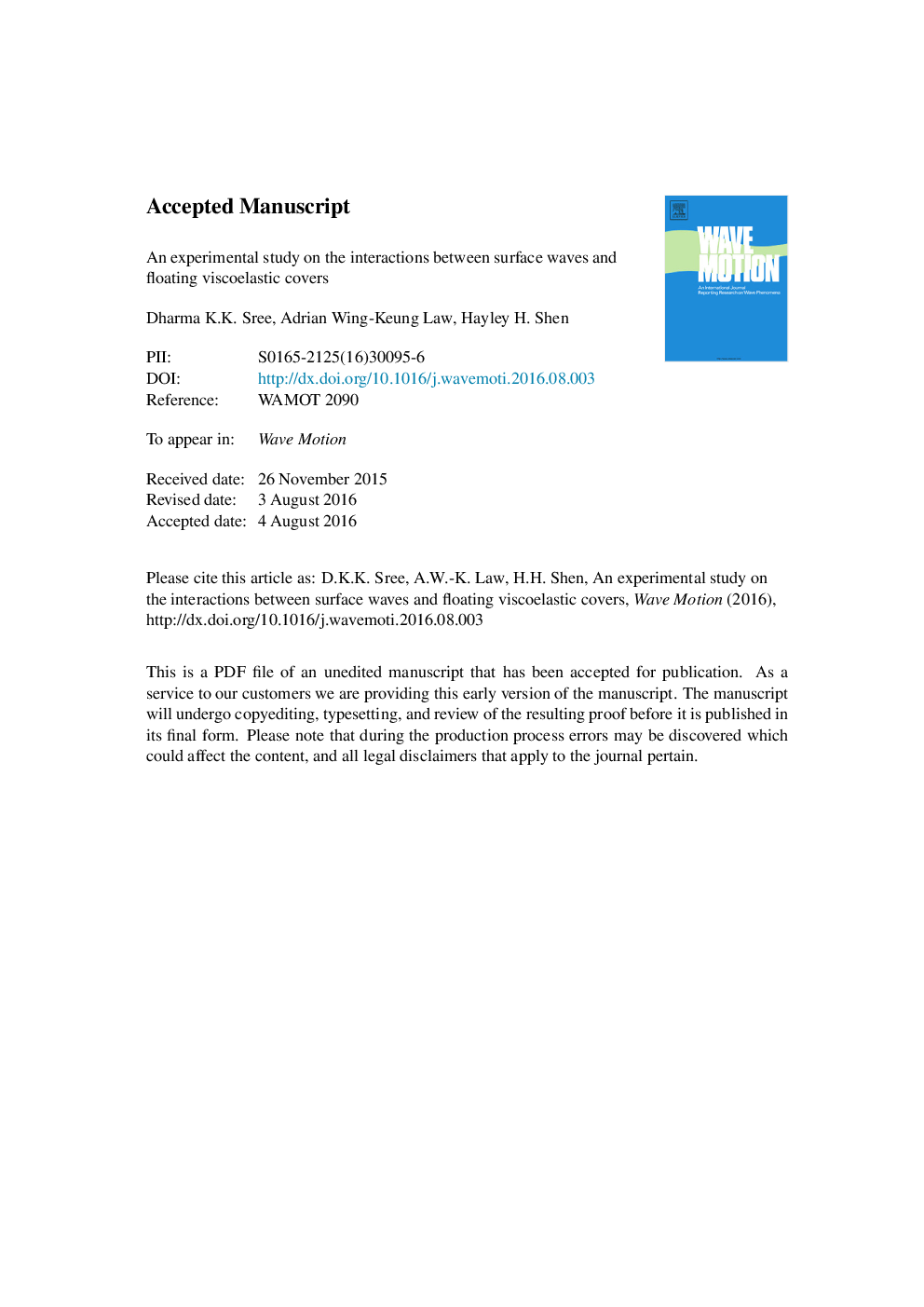| Article ID | Journal | Published Year | Pages | File Type |
|---|---|---|---|---|
| 5500549 | Wave Motion | 2017 | 44 Pages |
Abstract
A possible mathematical ice model for the wave interactions in polar seas was developed based on the assumption that an ice cover behaved as a Voigt viscoelastic material. The dispersion relation was found to depend on the rheological properties of the cover. In the present study, an experimental approach was developed that can enable the verification of the theoretical predictions in the laboratory. The approach utilized the blended mixture of white oil and Polydimethylsiloxane (PDMS) material with various mass percentages of a curing agent, to create a floating layer with a range of targeted viscoelastic properties. Due to the large coverage required for wave flume experiments, special curing procedures were also established for the preparation of PDMS material. The rheological results showed that the mechanical behavior of the floating cover was close to a Voigt material. Experiments were conducted to analyze the wave interactions with the floating viscoelastic cover. The measured data showed an obvious change of wavelength when waves propagated along the cover region. It is observed that the change in wavelength can be linked quantitatively to the viscoelastic properties based on the numerical predictions by Wang and Shen (2010). Some differences were however noted for less viscous covers under longer wave periods. A direct comparison of the PDMS covers with a polypropylene (PP) cover was also performed for verification. Only wave lengthening was observed under the PP cover. With a shear modulus more than three orders of magnitude greater than that of PDMS, the theoretical wavelength for the PP cover from Wang and Shen (2010) is very close to that of the thin elastic plate theory from Fox and Squire (1990). Comparison between these two theoretical results and the measured data again deviated with longer wave periods. In both PDMS and PP cases, edge effects and pitching motion of the covers were present at various degrees. In addition, the materials were not strictly a Voigt type. The small deviation from the idealized rheological behavior could also contribute to differences between theoretical and experimental results.
Related Topics
Physical Sciences and Engineering
Earth and Planetary Sciences
Geology
Authors
Dharma K.K. Sree, Adrian Wing-Keung Law, Hayley H. Shen,
